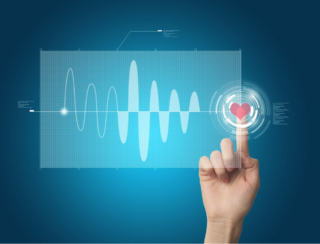
More Heart Disease, Stroke and Diabetes Articles
Heart Health at Your Fingertips: The Revolution of Remote Cardiac Monitoring

As health care delivery increasingly occurs between hospital and home, remote monitoring devices play a vital role in developing effective methods of cardiac care delivery.
The ability to provide complete and useful information about a patient’s cardiac health using remote cardiac monitoring devices has proven to be a valuable tool for cardiologists. To understand how such monitoring is changing the approach to treating patients with cardiovascular disease, let us discuss various aspects of this technology.
The Need for Remote Cardiac Monitoring
According to statistics, cardiovascular disease claims approximately 17.9 million lives annually, making it a global health problem of alarming proportions.
Traditional examinations and in-hospital monitoring often fail to collect real-time data, leading to potential delays in diagnosis and treatment. This is why remote cardiac monitoring can improve the situation because it guarantees:
- Increased accessibility and convenience. Especially for people living in remote areas or with limited mobility. This allows patients to receive vital cardiac monitoring from the comfort of their own homes.
- Early detection and intervention. Continuous monitoring can detect subtle changes in heart health, allowing healthcare providers to intervene quickly, preventing further deterioration and potentially saving lives.
- Improving outcomes and reducing healthcare costs. By closely monitoring patients’ heart health, healthcare providers can proactively manage this condition, reducing the likelihood of emergency hospitalization and the need for costly procedures.
Wearable Devices in Cardiac Monitoring
In recent years, wearable devices have become powerful tools in the field of cardiac monitoring. These compact solutions continuously collect data right on your wrists, providing valuable information about your cardiovascular health.
Wearable devices come in a variety of forms, from smartwatches and fitness trackers to specialized chest straps and patches. They are equipped with multiple sensors and can measure and analyze a wide range of parameters, including:
- heart rate;
- blood pressure;
- oxygen saturation;
- stress levels.
All data is provided in real-time. Devices are lightweight, portable, and easy to use, allowing people to monitor their heart health anytime, anywhere.
Implantable Cardiovascular Devices
In the cardiac monitoring field, another class of tools takes monitoring to a deeper level – implantable cardiovascular devices. These small electronic gadgets continuously collect complete data on cardiac function, allowing healthcare professionals to understand a patient’s condition and make informed treatment decisions.
The best-known implantable devices are:
- Pacemakers – regulate abnormal heart rhythms by monitoring and delivering electrical impulses.
- Implantable cardioverter-defibrillators (ICDs) – detect and treat life-threatening heart rhythms with electric shocks or cardiac pacing.
- Implantable cardiac monitors (ICMs) – monitor heart rhythm abnormalities over an extended period, allowing rare arrhythmias to be detected.
Such technologies provide patient comfort and convenience because they are discreet and do not require continuous adherence to treatment. However, they do require surgical implantation and regular check-ups to ensure proper function and to address any complications.
Telemedicine and Remote Consultations
Modern telemedicine uses digital technology to facilitate remote consultations between patients and health-care providers. Through videoconferencing and remote monitoring, people can receive expert medical care without the need for face-to-face visits, especially in rural or underserved areas.
One of the key benefits of telemedicine in cardiac monitoring is the ability to intervene in a timely manner and adjust treatment plans. With remote access to patient data, healthcare providers can identify potential problems, address issues, and make necessary changes to medications, lifestyle recommendations, or device settings.
Data Security and Privacy Considerations
In the era of digital health, ensuring data security and privacy is of paramount importance. The confidential nature of personal health information requires robust measures to protect patient data from unauthorized access and hacking, namely:
- Implementation of secure electronic health record (EHR) systems.
- Encryption to protect patient data.
- Access control, authentication, and authorization mechanisms for staff.
- Robust security measures for cloud platforms and data centers.
- Patients consent to the storage and processing of personal data.
- Transparency and a clear privacy policy.
- Regular data backups.
- Disaster recovery plans.
Patient Empowerment and Engagement
Engaged and interested patients are more motivated to make positive lifestyle changes, adhere to treatment plans, and actively participate in self-care. Highlighting the key drivers:
- Wearable devices and mobile apps allow patients to track heart health indicators and gain insight into their well-being.
- Remote access to data facilitates shared decision-making and personalized treatment plans.
- Shared decision-making involves patients in treatment discussions, fostering a sense of ownership and empowerment.
- Support networks, online forums, and social media communities provide patients with emotional support and shared experiences.
- Motivational techniques such as goal setting and positive reinforcement increase patient engagement.
- Personalized feedback and encouragement motivate patients to maintain a healthy lifestyle and adhere to monitoring protocols.
Remote Monitoring in Chronic Disease Management
As is already clear from all of the above, remote monitoring is revolutionizing chronic disease management by allowing healthcare providers to track and manage patients remotely. AI and machine learning algorithms analyze patient data, offering personalized recommendations for disease management.
This ensures early detection and timely intervention. At the same time, remote monitoring empowers patients to participate in treatment actively, make informed decisions, and lead healthier lives.
Thanks to secure digital platforms and virtual consultations, communication between patients and physicians improves, eliminating geographical barriers.
Overall, remote monitoring is improving access to care and transforming care delivery, promoting proactive and personalized approaches to chronic disease management.
Other Articles You May Find of Interest...
- Gaining Personal Confidence and Function after Stroke Rehabilitation
- Understanding Gender Differences: Heart Attacks In Women
- Diabetic Foot Care For Summer
- Take care of heart health after 40s
- Causes and Treatments For Hypertension and Heart Attacks
- Heart Health at Your Fingertips: The Revolution of Remote Cardiac Monitoring
- Your Heart’s Best Support This Year! The 9 Pillars To Prevent Heart Disease

















